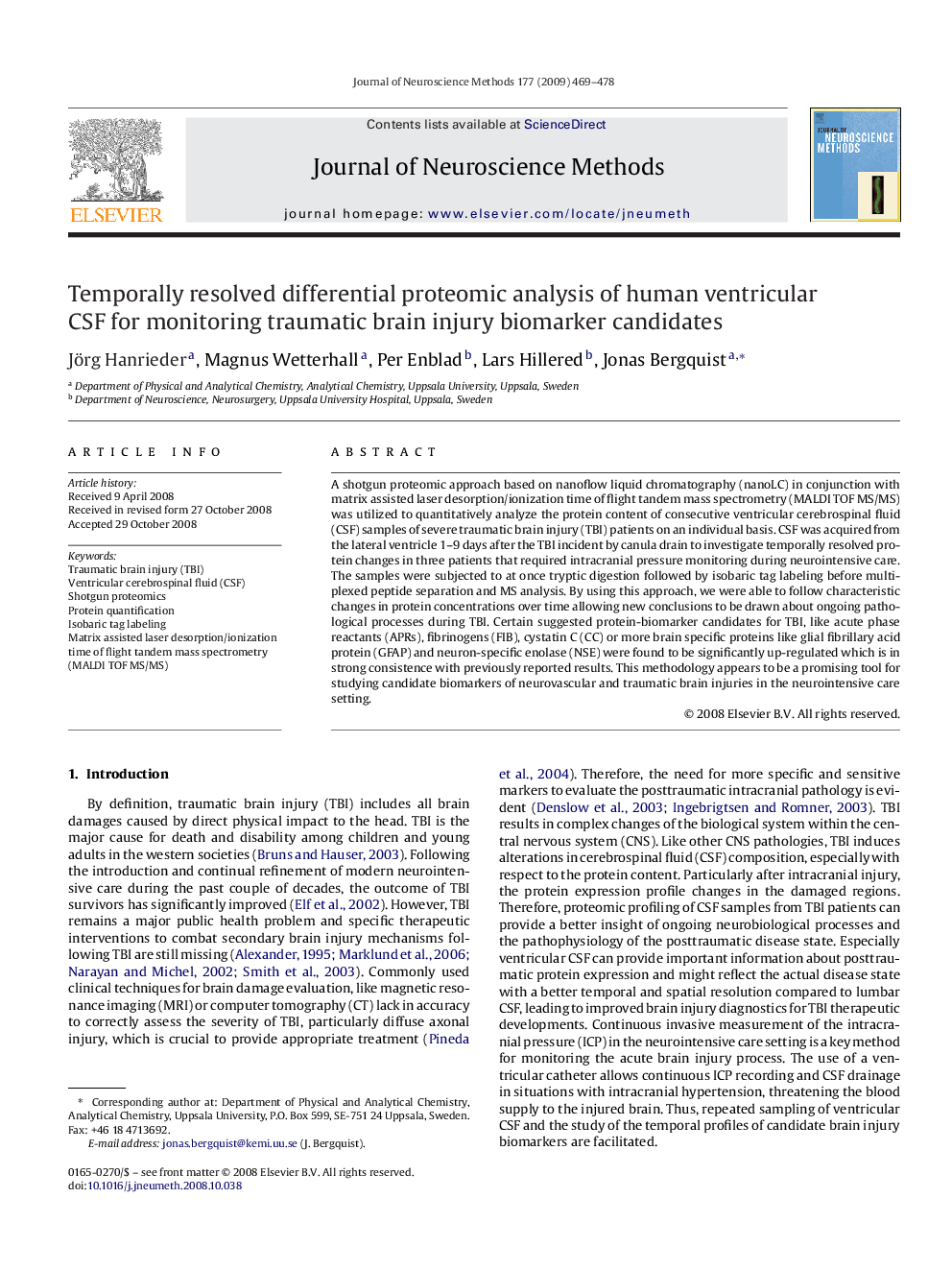| Article ID | Journal | Published Year | Pages | File Type |
|---|---|---|---|---|
| 6270337 | Journal of Neuroscience Methods | 2009 | 10 Pages |
Abstract
A shotgun proteomic approach based on nanoflow liquid chromatography (nanoLC) in conjunction with matrix assisted laser desorption/ionization time of flight tandem mass spectrometry (MALDI TOF MS/MS) was utilized to quantitatively analyze the protein content of consecutive ventricular cerebrospinal fluid (CSF) samples of severe traumatic brain injury (TBI) patients on an individual basis. CSF was acquired from the lateral ventricle 1-9 days after the TBI incident by canula drain to investigate temporally resolved protein changes in three patients that required intracranial pressure monitoring during neurointensive care. The samples were subjected to at once tryptic digestion followed by isobaric tag labeling before multiplexed peptide separation and MS analysis. By using this approach, we were able to follow characteristic changes in protein concentrations over time allowing new conclusions to be drawn about ongoing pathological processes during TBI. Certain suggested protein-biomarker candidates for TBI, like acute phase reactants (APRs), fibrinogens (FIB), cystatin C (CC) or more brain specific proteins like glial fibrillary acid protein (GFAP) and neuron-specific enolase (NSE) were found to be significantly up-regulated which is in strong consistence with previously reported results. This methodology appears to be a promising tool for studying candidate biomarkers of neurovascular and traumatic brain injuries in the neurointensive care setting.
Related Topics
Life Sciences
Neuroscience
Neuroscience (General)
Authors
Jörg Hanrieder, Magnus Wetterhall, Per Enblad, Lars Hillered, Jonas Bergquist,
